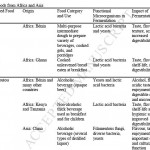Never rains but it pours. Hardly had I finished writing about the dismantling of the “conservation agriculture” narrative, that news is out of a serious going over for (part of) the organic agriculture one as well.
An independent review commissioned by the Food Standards Agency (FSA) shows that there are no important differences in the nutrition content, or any additional health benefits, of organic food when compared with conventionally produced food. The focus of the review was the nutritional content of foodstuffs.
Only about a third of the 162 studies from the past 50 years considered in the meta-analysis saw “a small number of differences in nutrition between organic and conventionally produced food but not large enough to be of any public health relevance.” Studies such as this one, presumably.
This follows a meta-analysis by the American Council on Science and Health which came to a similarly skeptical conclusion. That report was criticized in some quarters. And apparently the Soil Association has expressed some reservations about this latest study and called for better research. We can all go along with that, I think..
LATER. Reaction to the report from Civil Eats, US Food Policy and The Organic Centre. Bottom line is perhaps put best by Parke Wilde:
It is wisest to make your decisions about organic and conventional food primarily based on your assessment of the environmental considerations. The nutrient differences are not as decisive.
